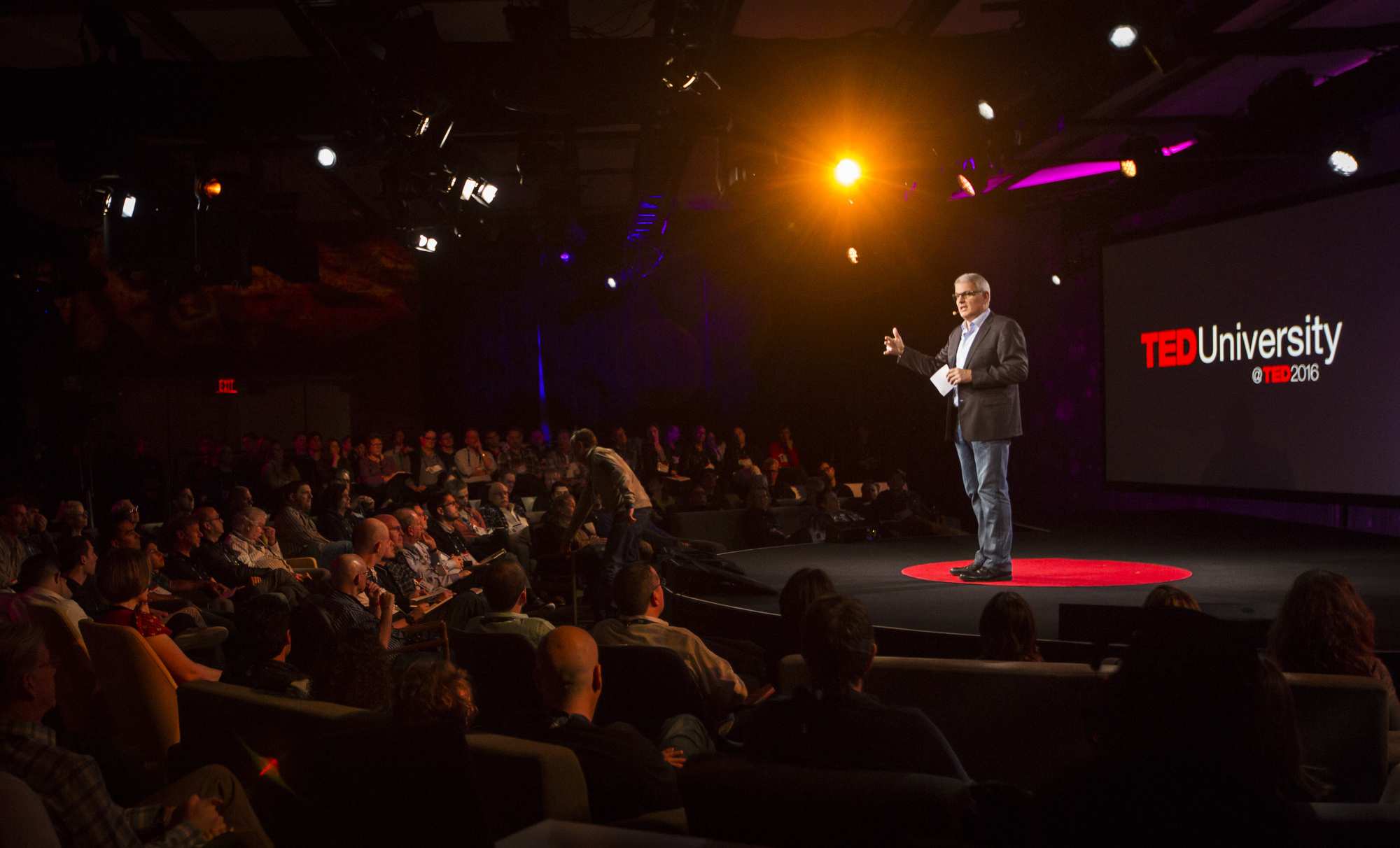
Bruno Giussani hosts TED University Wednesday during TED2016, February 17, 2016. Photo: Ryan Lash / TED
At the annual TED conference, the audience is as packed with big ideas as our speaker program. TED University is a chance for audience members to give short talks about both big ideas and personal experiences.
Recaps of the talks at TED University, in chronological order.
Travel points are currency. Brian Kelly is known for his site The Points Guy, which helps people maximize their travel while minimizing cost. Says Kelly, “miles are currency,” so he gives three tips on becoming your own Points Person. 1. Diversify: like investments, you want to diversify your loyalty programs; 2. Leverage partners: pick up and call the airline, as a lot of airlines won’t list partner flights on their sites; 3. Maximize credit cards: today cards come with great programs that can help you fly, so don’t use cash to buy plane tickets.
How to pick a company name. Jonathan Bell of Want Branding has come up with 150 company names. So, with 300 million brands out there, how do you choose one with impact? First, select the kind of name you want. Do you want a descriptive name (The Home Depot), a name with powerful phonetics (Kodak), or a name that borrows from another language (Hulu, which comes from a Chinese proverb)? Next, think about what you want your name to say, knowing that the best names have both an idea and an emotion. Finally, check that the name isn’t already taken. Bell, for what it’s worth, is impressed with the choice of Alphabet for the parent company of Google. “The name is an idea – a set of letters – and provides a playful link to companies underneath,” he says.
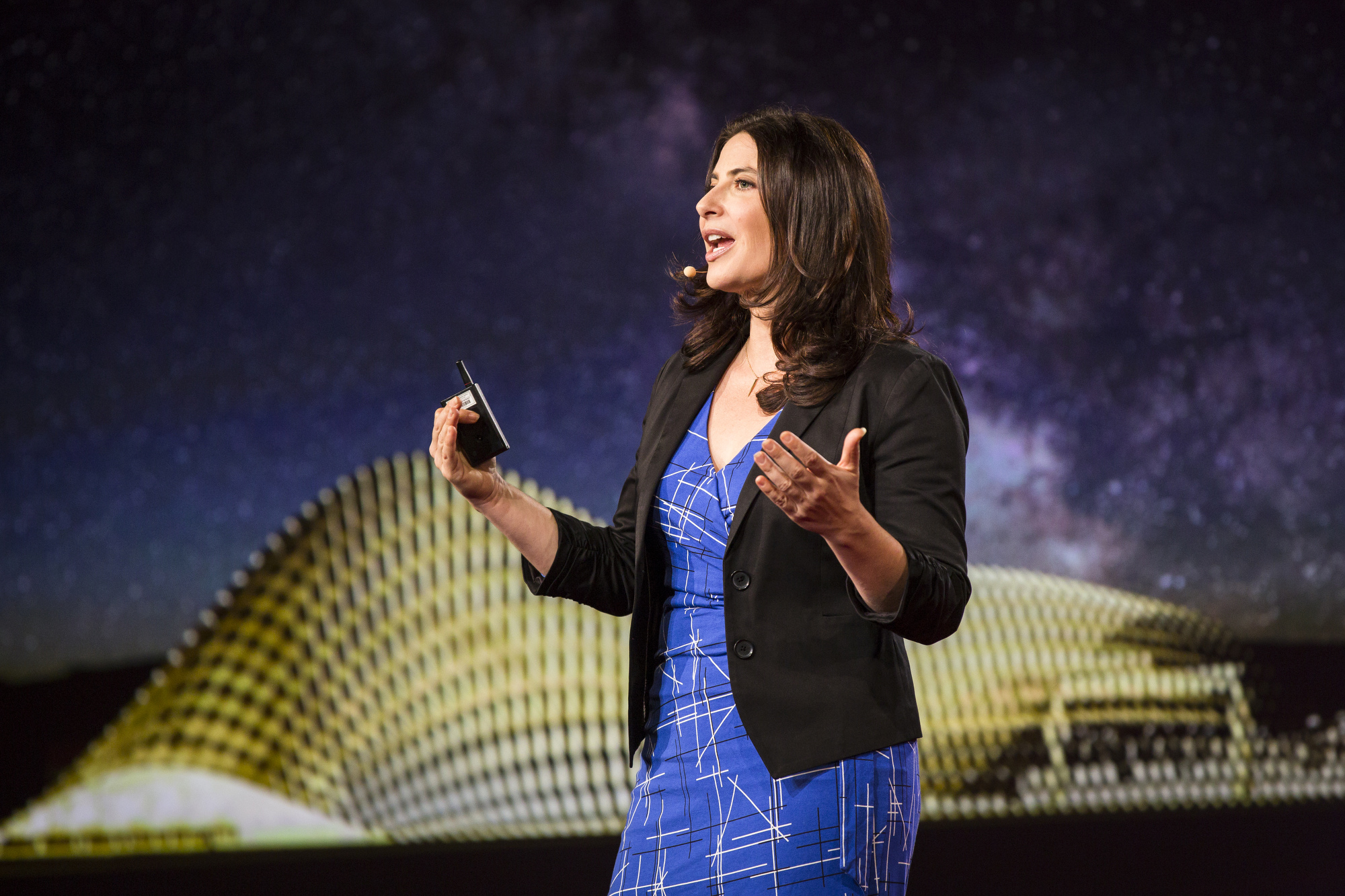
Rachel Pritzker invites us to be eco-modern, taking a wide-angle view of green living. She spoke at TED University on Wednesday during TED2016. February 17, 2016. Photo: Ryan Lash / TED
Redefining what it means to be green. Philanthropist Rachel Pritzker wants to address “the world’s most wicked problems.” She helped write the “Eco-Modernist Manifesto,” which argues that for all people to have the opportunity to enjoy modern living standards without destroying the natural world, we need to move society off dependence on natural resources. First, we need people to move to cities and stop our encroachment on nature. We’re also going to have to transition to energy sources that are clean and, more important, dense, such as nuclear energy. “It may be an uncomfortable truth, but nuclear holds enormous potential for environment and human civilization,” Pritzker says. Her message: Human prosperity and an ecologically vibrant planet are inseparable.
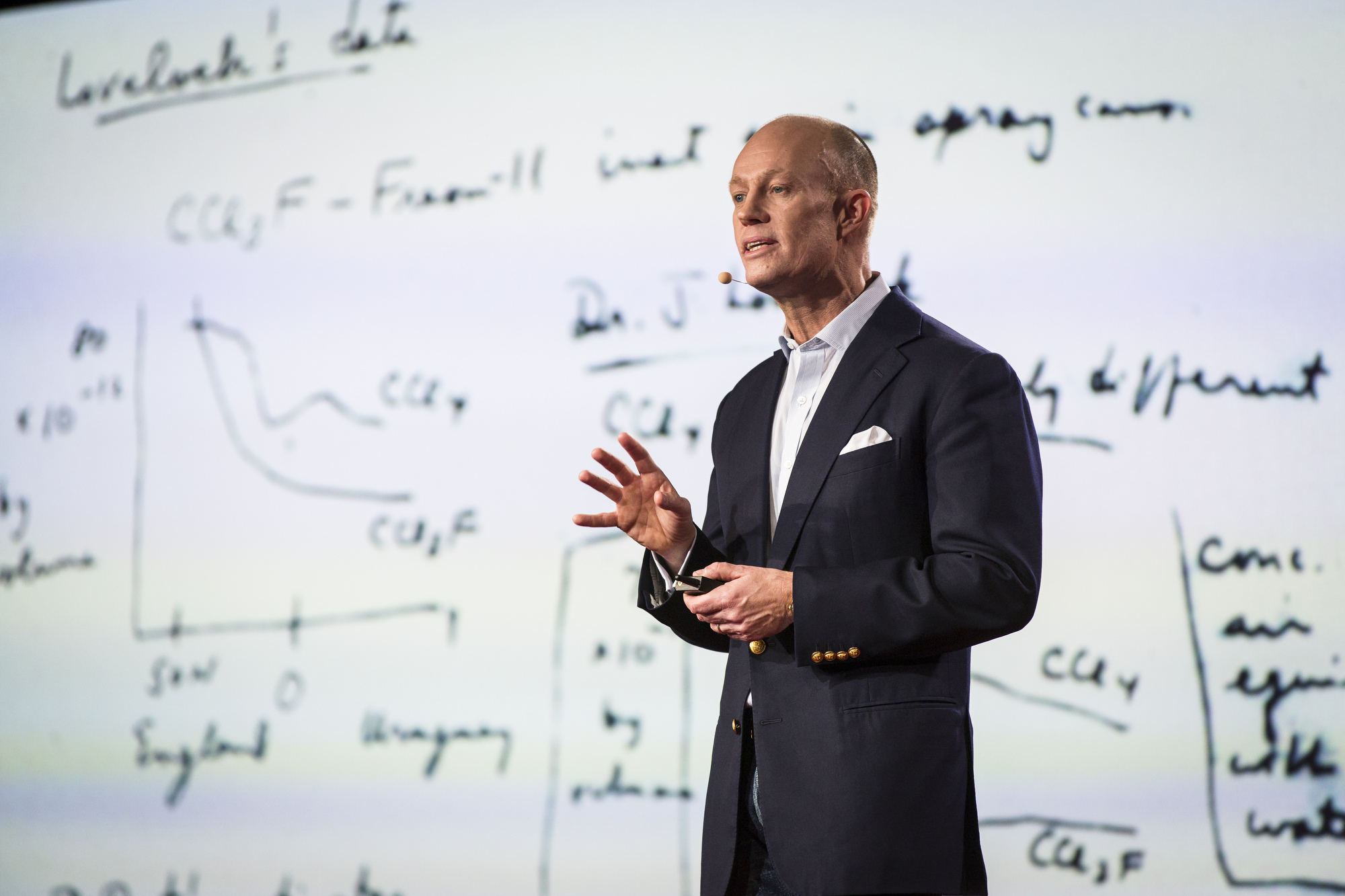
Jason Pontin speaks on behalf of good old-fashioned problem solving — not just waiting for the next tech breakthrough. He spoke at TED University on Wednesday during TED2016, February 17, 2016. Photo: Ryan Lash / TED
How we’ll solve big problems. MIT Tech Review’s Jason Pontin is here to talk about big problems. In Silicon Valley, people hope for breakthrough disruptive solutions that appear like miracles to replace the old way of doing things — but the real answers lie in difficult and slow processes. “In the real world,” he says, “technological solutions are not so easily won.” But there’s good news. We’ve collectively worked to solve a big problem before, and we can do it again. During the 20th century we went from having two chemists who predicted a depletion of the ozone layer right through to effective policy against aerosol sprays with chlorofluorocarbon (CFCs). That’s because the science was incontrovertible; institutions made rational commitments; we had or found technological alternatives; and politicians were able to get on board.
Can a machine learn to do your job? The automation of work started with simple tasks. It’s come a long way. In 2012, Anthony Goldbloom’s Kaggle, which holds machine learning competitions, challenged its community to create an algorithm that could grade essays with same accuracy as real teachers. Next, the community was asked to build an algorithm that would give the same diagnosis for an eye problem as a real ophthalmologist. So, where will this end? “We have no chance in beating machines at frequent, high-volume tasks,” says Goldbloom. “But machines cannot compete with us when it comes to tackling novel situations.” Jobs that can be reduced to simple tasks will be automated — and those that depend on judgment and problem-solving will need human beings to do them.
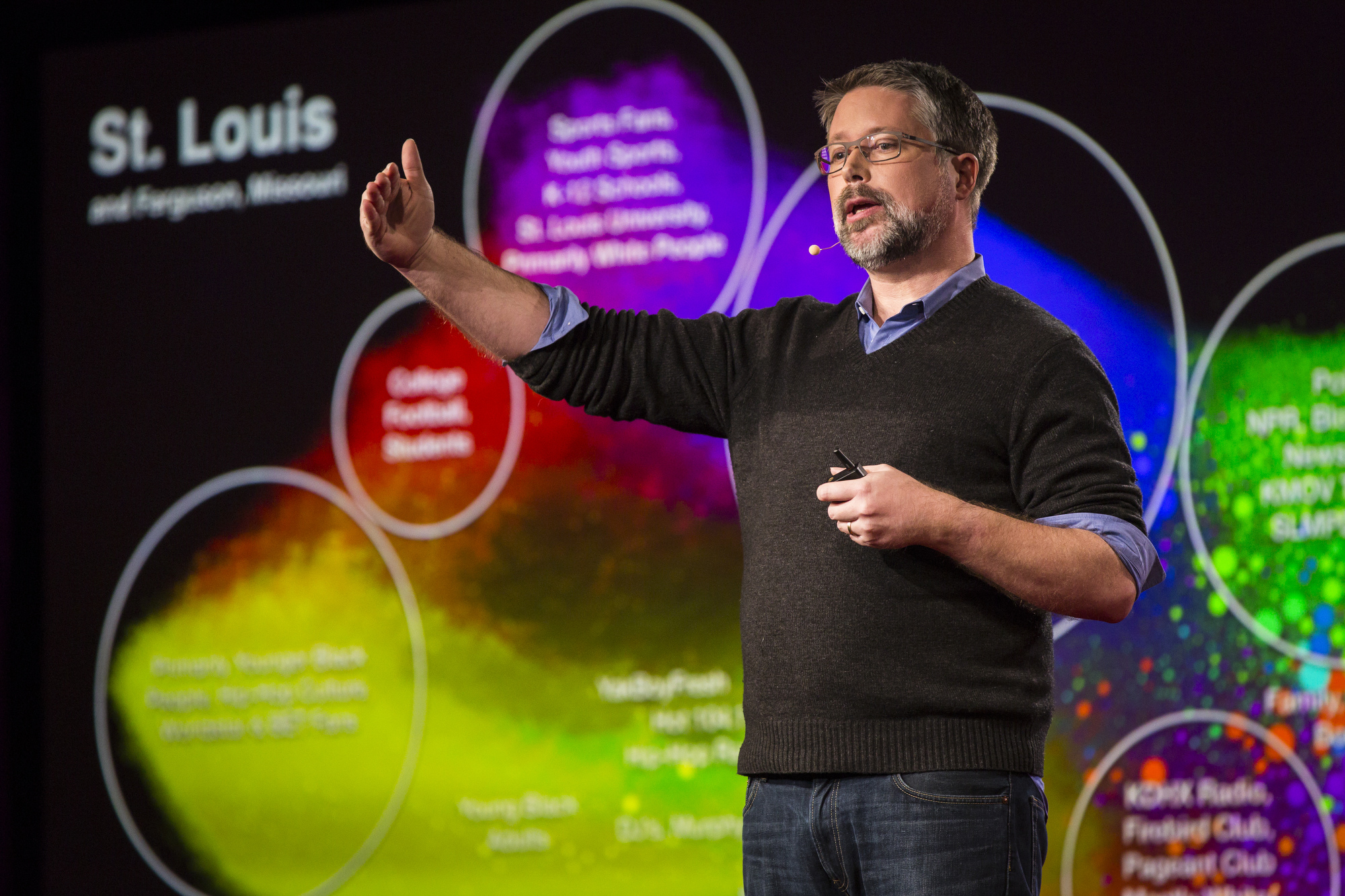
Dave Troy creates social media maps of cities that make plain their divisions (and surprising common ground). He spoke onstage at TED University on Wednesday during TED2016. Photo: Ryan Lash / TED
New rights for the digital age. Technologist Dave Troy thinks we need a new framework for data governance. “Changes in tech are happening so fast, we sometimes fail to consider the implications,” he says. Troy calls for corporations to collect data for social good, and to grant individuals access to that data. Likewise, he argues that individuals have a right to encryption. “Strong encryption is a solved problem,” he says. “The debate is around implementation. We need to push to get strong encryption to be recognized by the government.” Finally, Troy calls for the protection of privacy. Drawing an example from history, he cites the anonymously written Federalist Papers to show the power of anonymous voices.
An update on “justness” in American companies. At TED2015 Paul Tudor Jones spoke about the concept of “justness” and refocusing capitalism around social responsibility. He promised to work on an index that ranked American companies by their “justness,” and he gives an update today on his progress. A poll of 40,000 Americans conducted by Tudor Jones’ company shows that employee pay is the most important measure: Does the company pay its workers fairly? Next is employee treatment: How do the workers feel? Are they treated with respect? And so on. Starting this summer he’ll rank the top 1,000 largest companies in the US and re-rank them annually.
An interlude in C major. TED Fellow Joshua Roman plays a special cello, one crafted in 1899 by master instrument maker Giulio Degani. As he plays “Bourrée” from Suite No. 3 in C major by Johann Sebastian Bach, the contrast between such an old instrument and such a young classical musician gives the performance new dimension. With a smile on his face, he plucks and bows the audience into a trance.
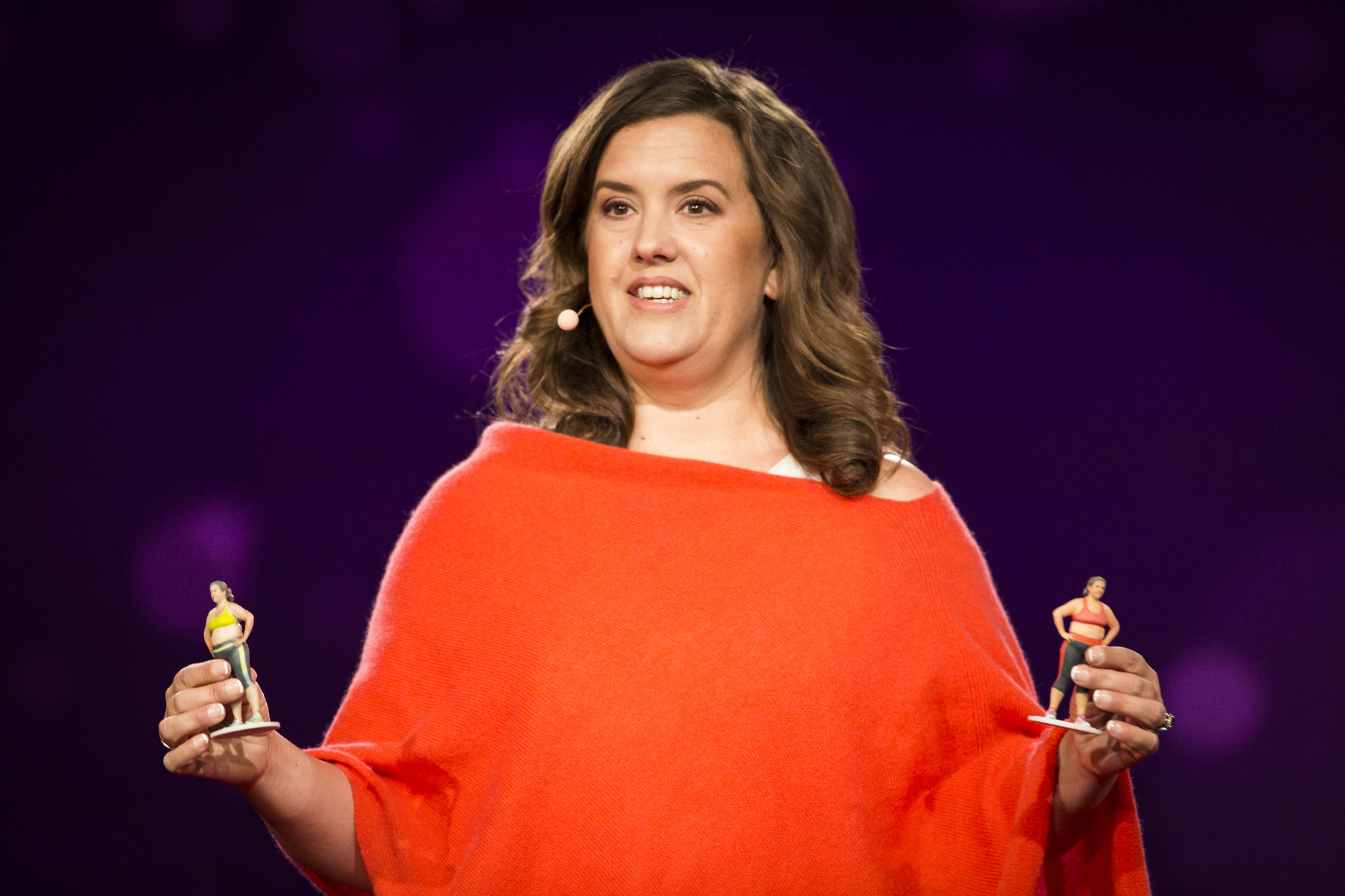
Joanna Bloor shows two 3D-printed figurines, made to celebrate a personal goal. She spoke onstage at TED University during TED2016. Photo: Ryan Lash / TED
To lose weight, ditch the scale. Fifteen years ago, Joanna Bloor was morbidly obese, and one day while walking on a beach, she made a promise to herself to run a marathon and lose 100 pounds. The marathon was the easy part (she loves running now) — the 100 pounds was more difficult. “The result on the scale comes from what you put in your mouth,” she says, “and when you’re out eating, the scale isn’t there.” Her solution: An accurate 3D-printed miniature figurine of her own body, which she carries with her everywhere and gets reprinted every 90 days. Now, she knows down to the millimeter how much her body is changing. “That’s the only measure of success that counts,” she says.
From blindness, parenting insight. Mark Goffman has worked on TV shows like Sleepy Hollow, The West Wing and Limitless. “As a screenwriter, I love telling stories about people who overcome seemingly insurmountable obstacles,” he says. “But as a parent, the last thing I wanted was for my newborn son to face impossible odds.” His son, Oliver, wasn’t making eye contact. And while doctors initially dismissed Goffman as a neurotic first-time parent, it turned out that Oliver was blind. His retinas eventually began to develop, but because babies learn by observing, he was far behind. At 18 months, he tested in the bottom 2% for his age. “Experts cautioned us to expect him to need heavy assistance for the rest of his life,” says Goffman. But Goffman and his wife didn’t just accept that. Despite Oliver’s extremely blurry vision, they enrolled him in local preschool, encouraged him to explore and taught him to take pride in using a magnifying glass or moving to the front of class. Now 5 years old, Oliver snowboards. He plays piano beautifully. He loves math. “Everyone faces challenges, but they can lead to incredible gifts,” says Goffman. “That’s something he reminds me of every day.”
A new way to create peace in prisons. “Forests are portals to places of peace,” says tree researcher Nalini Nadkarni, and especially so in prisons, where stress and agitation are high. For a year, Nadkarni performed an experiment in a maximum security prison in Oregon to find out: Could images of nature calm inmates? The prison’s inmates were allowed to watch nature videos for an hour while they worked out, and she found that 90% felt that the nature intervention improved their mood and reduced irritation. And amazingly the prison saw a 26% decrease in violent infractions. We need to recognize the power of nature on the nature of humans, says Nadkarni.
A moonshot for education. Esther Wojcicki wants to change schools from the inside out. Thirty-two years ago, she threw out the textbook she had been assigned to teach and rewrote the curriculum, giving kids the opportunity to control their own learning. She knew that kids don’t learn in the lecture model. “Eighty percent of learning takes place outside the classroom,” she says. “Can you imagine learning to ride a bike by reading a book about it?” So why are we still teaching using lectures? “We need to change the mindset and the role of the teacher,” she says, “from the ‘sage on the stage’ to the ‘guide on the side.’” We can achieve this, Wojcicki says, by de-emphasizing testing and promoting more experiential learning. To put this idea into effect, she proposes that we devote every Friday to creating a Maker Faire-like environment in schools.
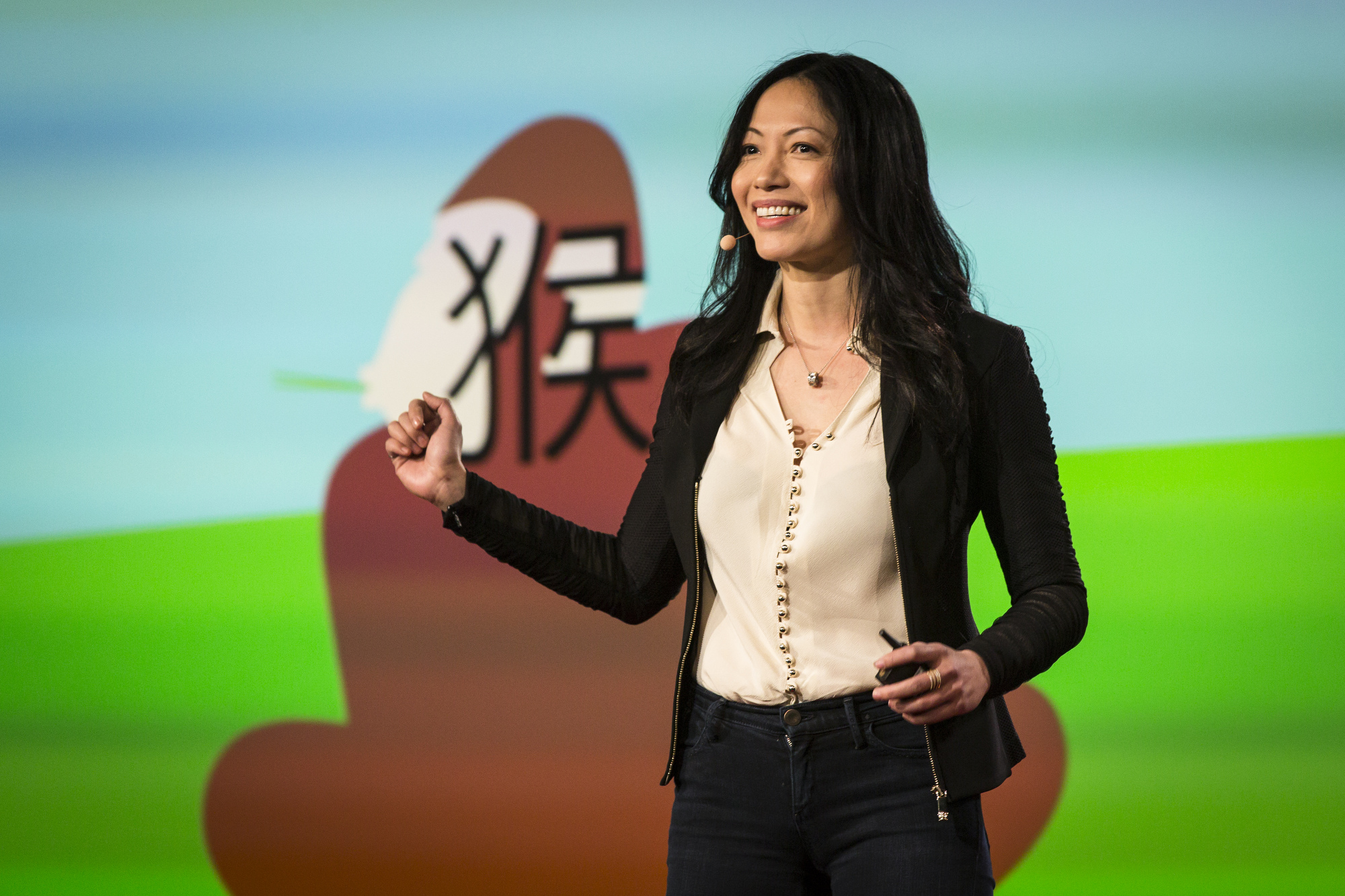
Shaolan Hsueh shares some tips for understanding the Chinese zodiac during TED University at TED2016. Photo: Ryan Lash / TED
A primer on the Chinese zodiac. Says entrepreneur ShaoLan Hsueh, about a quarter of the world believes in the power of the Chinese zodiac — so it’s time to wise up on the basics. The zodiac system works over 12 years, with each year assigning a different animal sign. According to Chinese tradition, the zodiac dictates everything from naming, marriage, and people’s interpersonal relationships. Certain signs are luckier than others—the desirable dragon sign means that in 2012 the birthrate in countries like China and Taiwan increased by 5%, while C-sections spiked in the month before the inauspicious goat year.
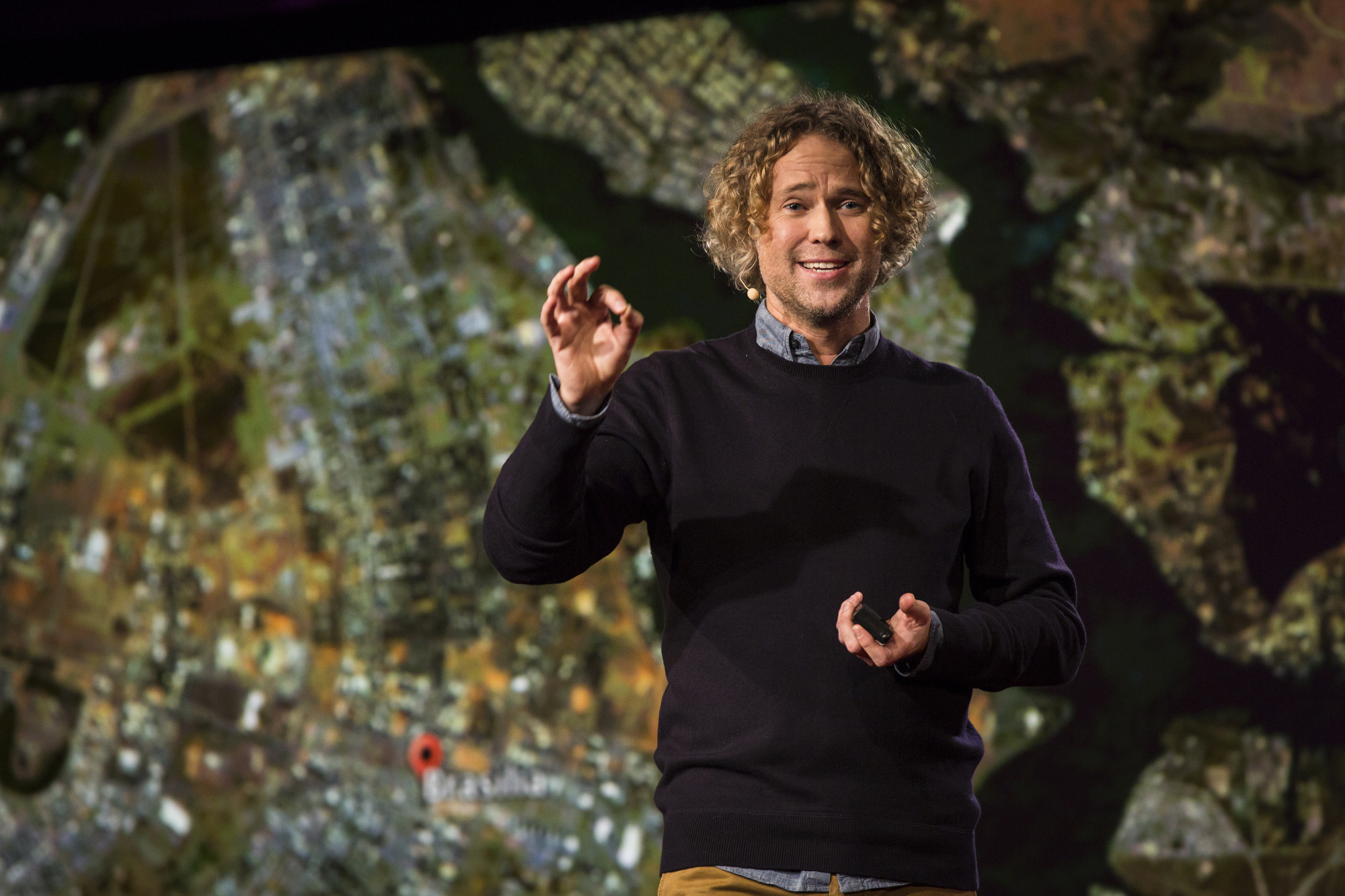
Tom Hulme studies “desire paths,” unofficial walkways created by pedestrians. He spoke at TED University during TED2016. Photo: Ryan Lash / TED
The path most traveled by. Designer Tom Hulme shows us a picture of a greenspace in London, with a mud track straight across its diagonal. This is called a “desire path,” and seeing these emerge can teach a designer a lot. “People are resourceful, they will always find the low-friction way around,” he says. “Often our job is to pave emerging desire paths.” He means this fairly literally. He shows us an example of park in Brasilia with elegant, looping roadways. it was designed for cars, but people have walked desire paths in many directions through it. Because designers haven’t taken note, the city has a high pedestrian accident rate. As a counterexample, he shares what designers did at UC Irvine. They built the building first and let students cut their own paths — then they paved them. This, says Hulme, is a great example of designing for “real needs” after observing how people actually use a space.
Filling in a blank canvas. Peter Toren’s father is a great storyteller, and he loves to tell stories about his family. “I think he loves to tell stories because he and his brother were the only ones to survive the Holocaust,” Toren says. He especially loves to tell stories about his uncle, David Friedman. Before World War II, Friedman owned a farm and distillery, threw parties for German intellectuals and collected paintings. For Toren, Uncle David was never a real figure, in part because no photographs of him survived the war. Toren’s father remembers a specific painting hanging in his Uncle David’s sunroom — Max Liebermann’s Two Riders on the Beach. After Kristallnacht, the Nazis seized Friedman’s villa and paintings, and Toren’s relatives were sent to concentration camps. But in November 2013, the Munich public prosecutor announced the seizure of more than 12,000 pieces art from Hitler’s primary art dealer, who had in his possession paintings that had belonged to Friedman. Toren’s firm brought suit against the German government, and eventually Lieberman’s Two Riders on the Beach and Basket Weavers were returned to Toren’s family. Thanks to press generated by the case, a woman contacted Toren’s family and showed him photographs of Uncle David. “The quest for the stolen painting created opportunity for us to fill in a reminder of family history,” he says.
How I lost control of my wedding. Özge Yilmaz stands on stage in a wedding dress and talks about how she gave away her wedding. She and her fiancé didn’t care for all the unnecessary hoopla of a wedding; they wanted to do something good instead of just collecting the traditional gold coins that are given as gifts in Turkey. So they did something unusual: They made their wedding open to the public, charging 100 Turkish liras (about $35) per person and inviting other people to get married at their party, too. They danced all night.
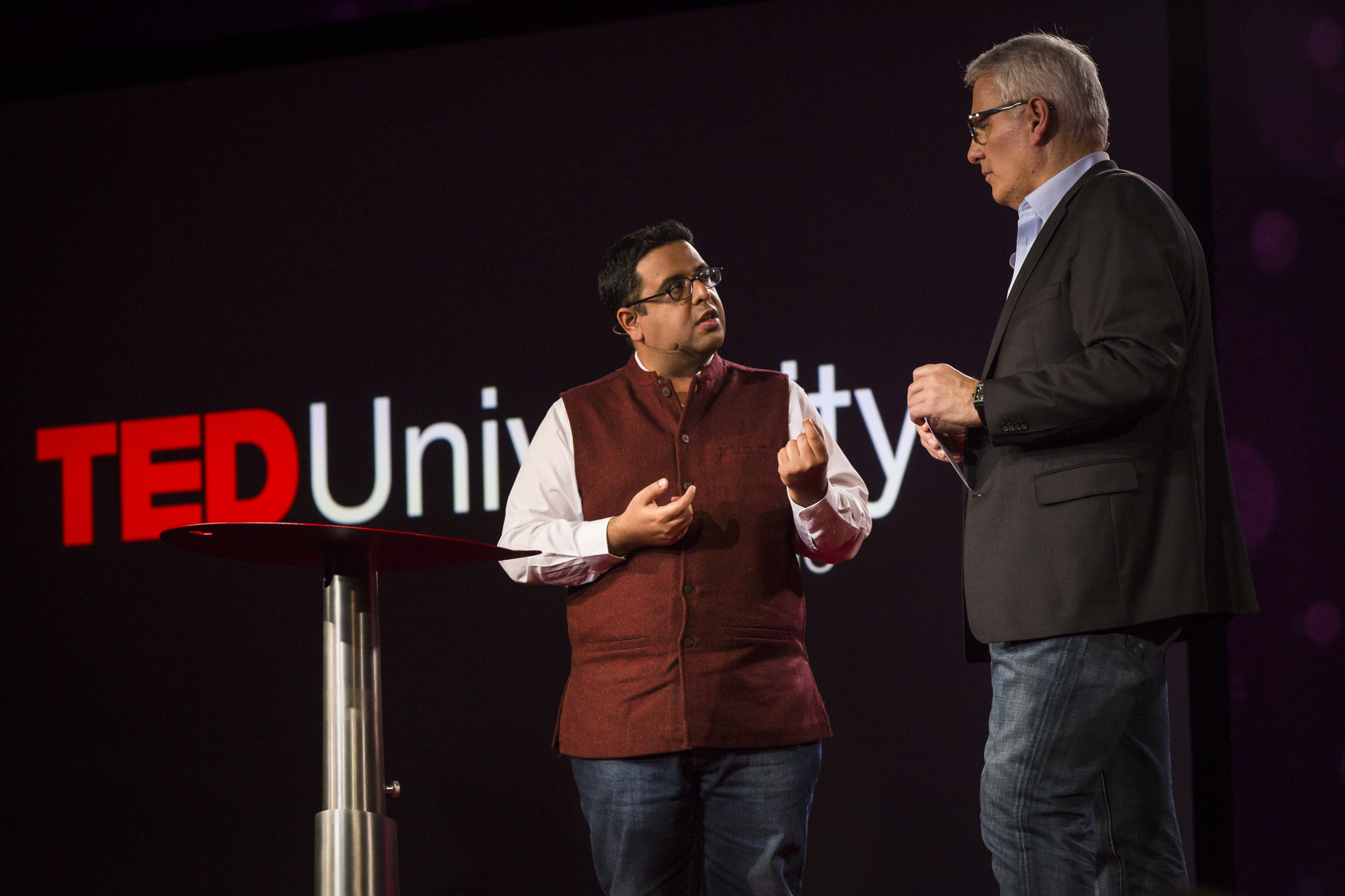
Nikhil Pahwa helped to fight for an open Internet in India — and against net-restraining laws made in secret. He spoke at TED University during TED2016. Photo: Ryan Lash / TED
Net neutrality in India. “A year ago, a battle for the control of the Internet began in India,” says TED Fellow Nikhil Pahwa. Mobile carriers in the country were lobbying for policies that would let them charge different rates for different sites, and policies that would require websites to get a license to operate in India. The founder of a leading digital news site in India, MediaName, Pahwa believed this would do major damage for online freedom in his country, where one billion people are not yet online. “Regulations are often made in India without public participation,” he says. “Citizens rarely get involved.” He knew rallying people for the cause would be an uphill battle. He started SaveTheInternet.In, and to his surprise a million people wrote in support of net neutrality. But the effort stalled. To drum up more support, they started working with political parties and entertainers to amplify the message. “Ten days ago, we learned that we won,” says Pahwa. “Internet policy in India will never again be made in a vacuum.”
Comments